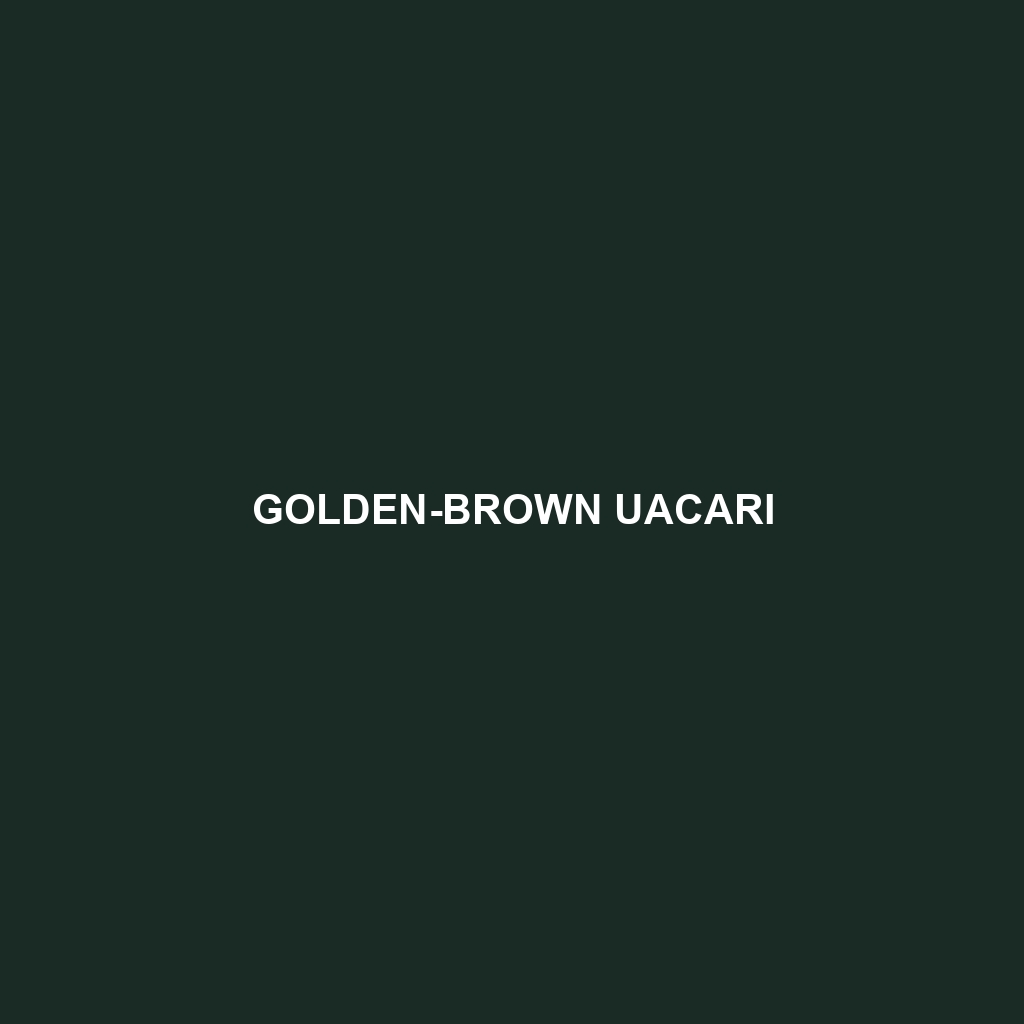Species Description: Golden-brown Uacari
Common Name: Golden-brown Uacari
Scientific Name: Cacajao amuna
Habitat
The Golden-brown Uacari is primarily found in the dense, tropical rainforests of the Amazon Basin, particularly along the banks of rivers in Brazil and parts of Peru. This species thrives in swampy, flooded areas and prefers environments with abundant vegetation that offers both shelter and food sources. The intricate foliage of the lowland forests provides an ideal habitat for this unique primate, allowing it to navigate a variety of terrains.
Physical Characteristics
Golden-brown Uacaris are medium-sized primates, measuring around 40 to 60 cm (16 to 24 inches) in length, excluding the tail, which is an additional 50 cm (20 inches) long. Their fur is characterized by a beautiful golden-brown color that varies among individuals, often with lighter underbellies. They have a distinctive flat face with a shorter snout compared to other primate species, and their wide set eyes and lack of tails contribute to their unique facial structure. One notable feature is their relatively long, grasping fingers that aid in climbing and foraging.
Behavior
Golden-brown Uacaris are social animals, typically found in small groups of 6 to 12 individuals. They are diurnal, meaning they are active during the day, and they spend a considerable amount of time foraging for food. Their vocalizations, which include a range of whistles and grunts, are considered essential for communication within their group. These primates are also known for their agility in trees, often utilizing their strong limbs to swing from branch to branch.
Diet
The diet of the Golden-brown Uacari primarily consists of fruits, leaves, seeds, and insects. They are particularly fond of ripe fruits, which are abundant in their rainforest habitat. Their feeding habits encourage seed dispersal in the ecosystem, playing a vital role in maintaining the health of their environment. Foraging behaviors vary seasonally, as they adapt to the availability of different food sources throughout the year.
Reproduction
Golden-brown Uacaris have a gestation period of approximately 170 days, giving birth to a single offspring, although twins are rare. The breeding season varies slightly depending on environmental conditions, typically coinciding with fruit availability. Mothers are highly protective of their young, carrying them on their backs until they are old enough to venture out and explore.
Conservation Status
The Golden-brown Uacari is currently listed as Vulnerable by the International Union for Conservation of Nature (IUCN). Threats to their population include habitat destruction due to logging, agriculture, and human encroachment. Conservation efforts are critical for improving their chances of survival, and protected areas play a significant role in their preservation.
Interesting Facts
Did you know that Golden-brown Uacaris are known for their unique and complex social structures? Their communication skills are advanced, and they display a range of emotions including playfulness, curiosity, and affection towards one another. Additionally, their striking appearance and captivating behavior make them a subject of interest for researchers and wildlife enthusiasts alike.
Role in Ecosystem
The Golden-brown Uacari plays a crucial role in its ecosystem as a seed disperser. By consuming various fruits and seeds, they contribute to the diversity and regeneration of plant life in their habitat. This interaction helps maintain the balance of the rainforest, supporting a wide range of other species and contributing to the overall health of the ecosystem.
